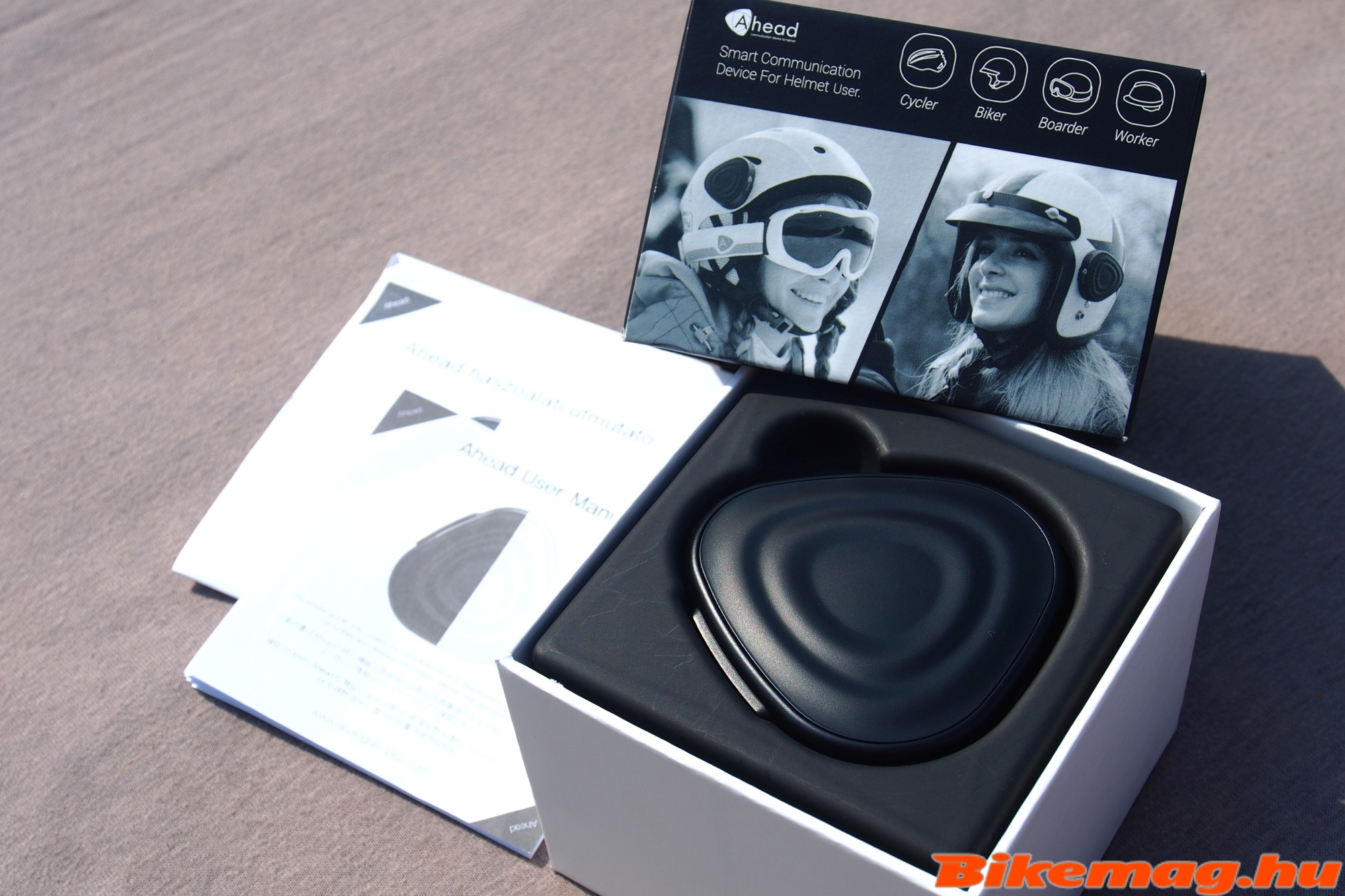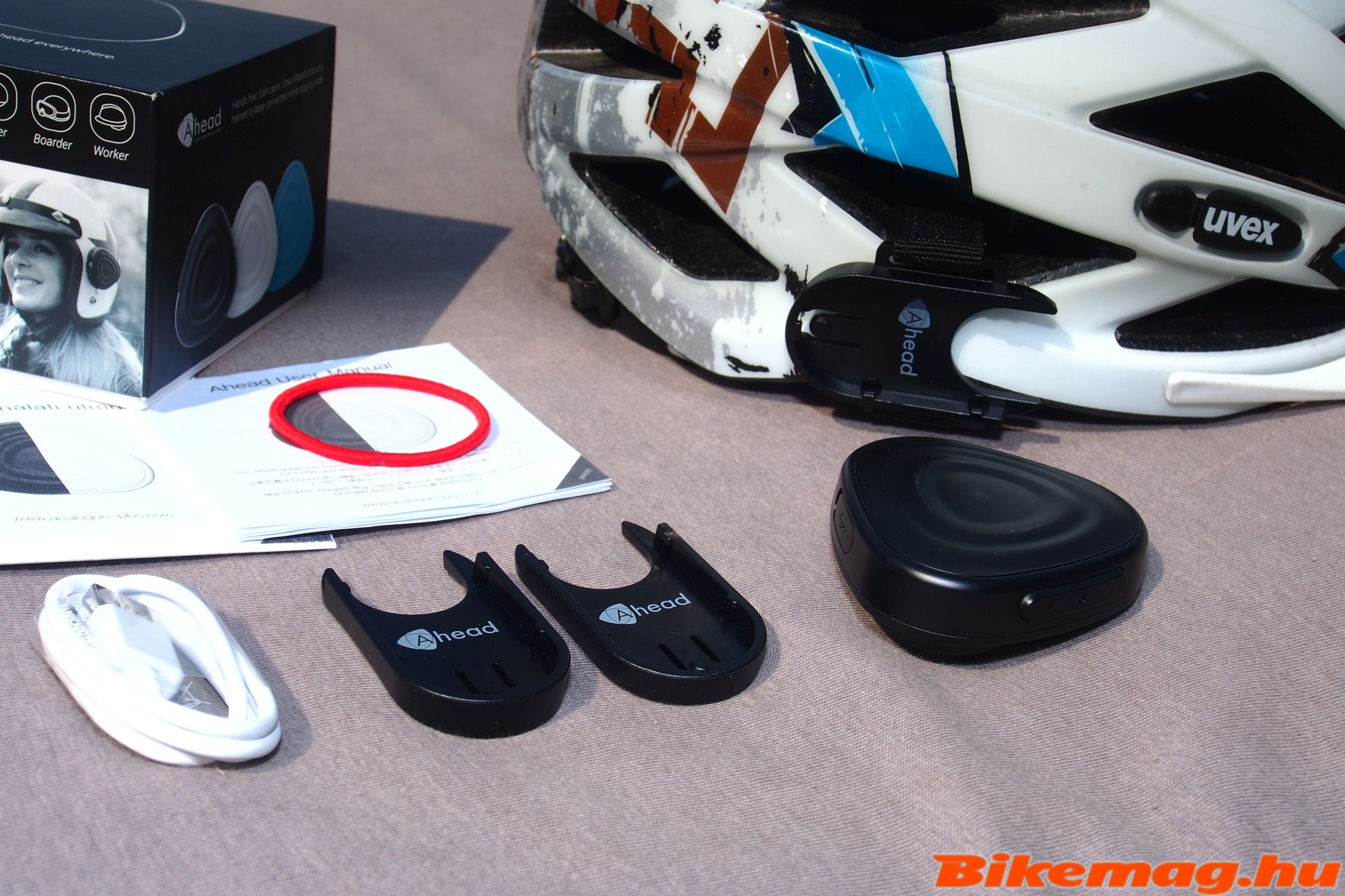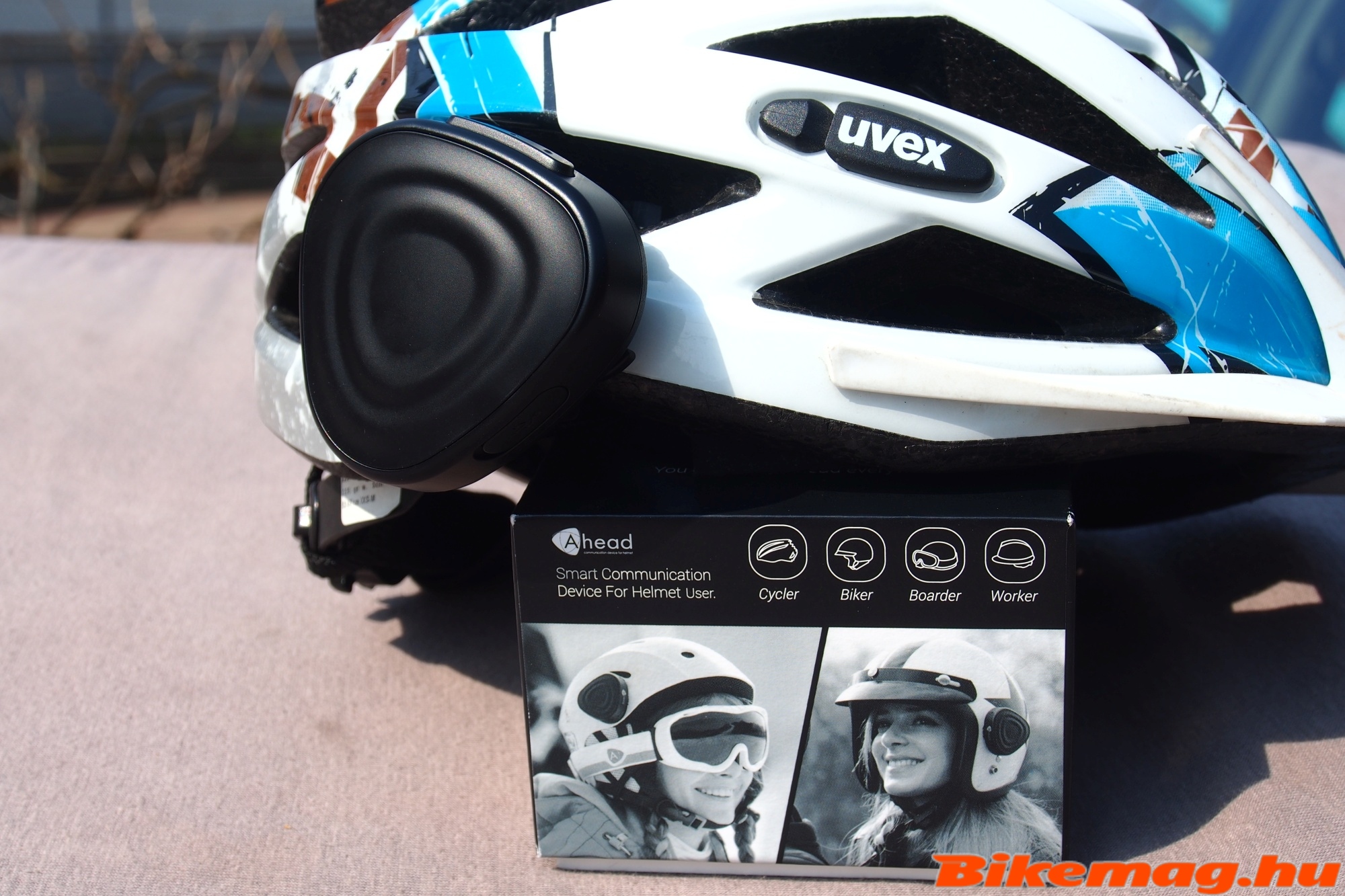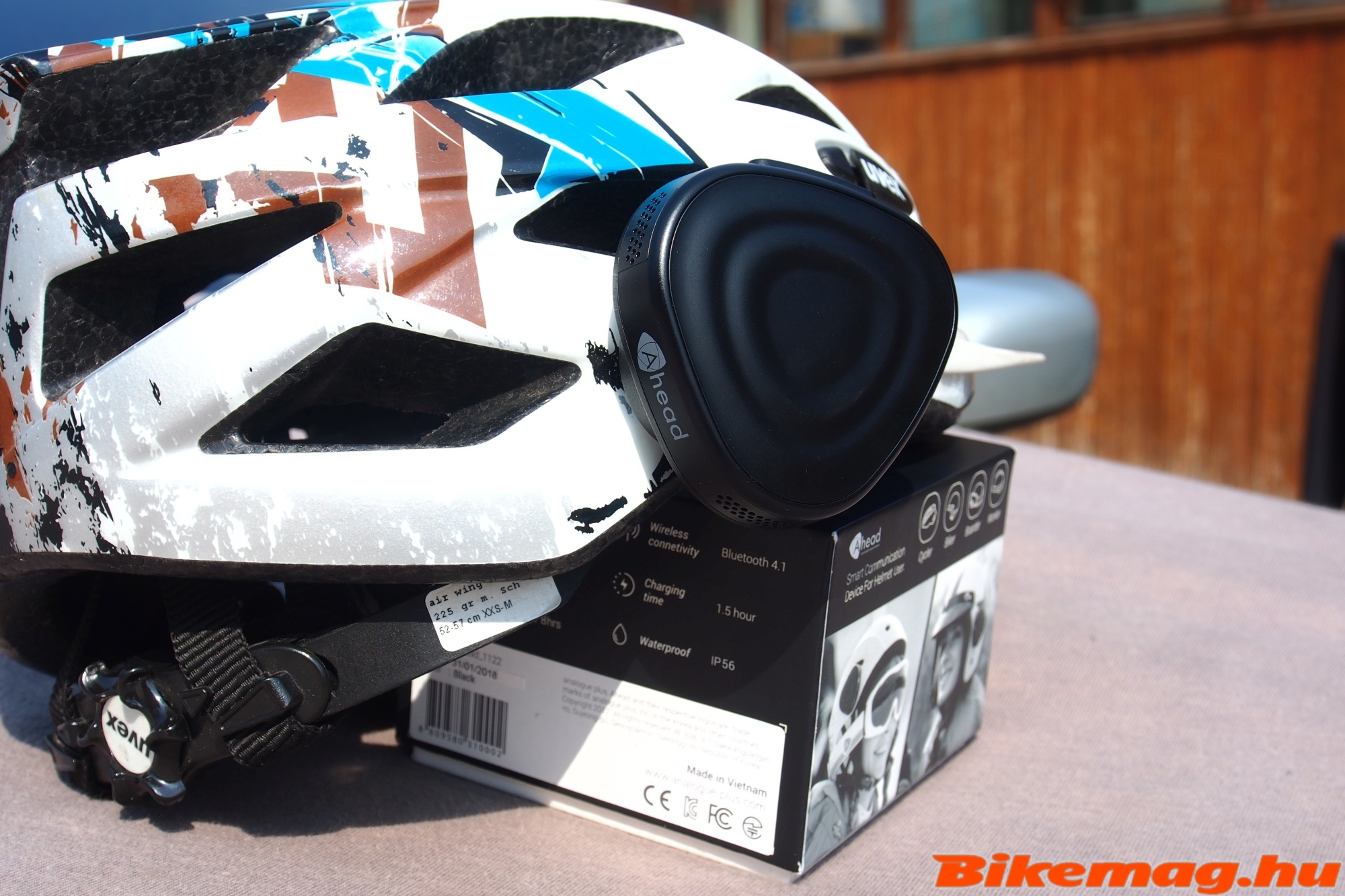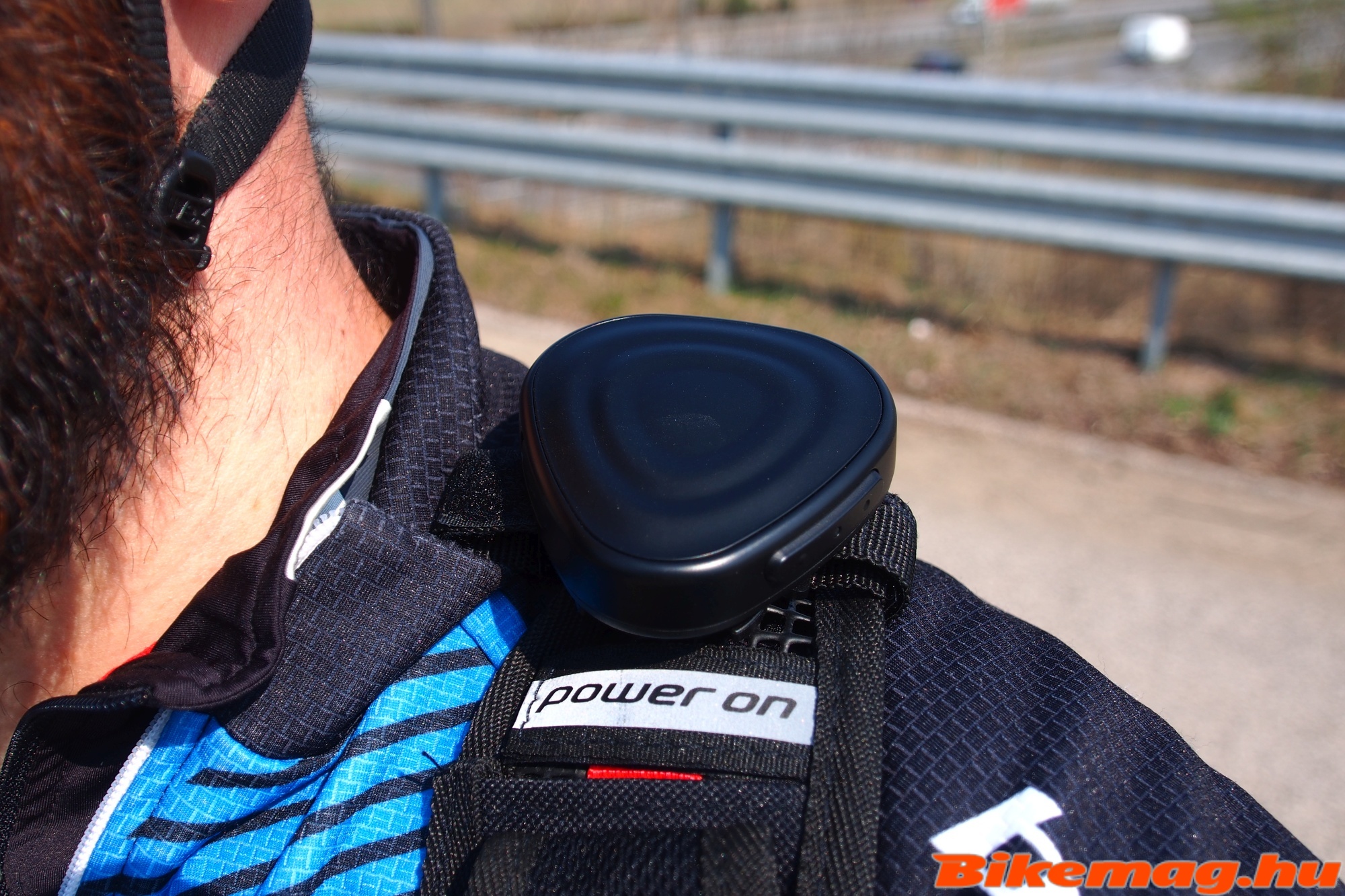I received a small black box from the editors of Bikemag. The message read: please test the contents! I opened it and found an even smaller triangular shaped device, which turned out to be a premium quality smart headset. The brochure revealed that this device will enable any helmet to be upgraded to a “smart” headgear. So let’s see how it performs for the cyclist!
In the age of smartphones and smart accessories it’s little wonder to see a helmet which claims to be “smart”. The device I found in the box is called Ahead, it’s essentially a handsfree headset which when mounted to a helmet, promising not only to free up our hands, but allows unobstructed perception of the surrounding sounds. This latter feature sets it apart from the myriad of headset devices on the market, along with practical mounting on – for example – a bike helmet. The technical solution is innovative, the Ahead employs an oscillator instead of a conventional loudspeaker. Thus the technology bears little resemblance to a boom box or a headphone, as it uses the skin of the helmet as a membrane. Yes, your trusted helmet becomes a speaker, mixing external sounds with the ones your smart device is sending you!
The manufacturer describes the Ahead as follows:
“The device snaps onto any helmet and connects to the smartphone. It keeps the rider safe while allowing to stay in touch. One can make phone calls, listen to music, turn-by-turn navigate, track activities or use the device as a walkie-talkie. At the same time it doesn’t filter sounds from outside. The only exception is wind noise, which it by-passes by employing narrow angle microphones and special algorithm.”
Looking at the contents of the packaging, we find a number of useful accessories, for example several types of brackets for various smooth surfaces, a micro USB cable for charging and last but not least, a user guide in Hungarian. All we have to do is find which of the brackets fits our helmet, and attach it using glue to the appropriate location specified in the instructions. Once the device is snapped into the bracket, it’s automatically turned on. During the first use, the Ahead has to be paired with our smartphone, from then on this steps becomes spontaneous. The connection is wireless using Bluetooth 4.1 protocol. I found the link quite stable, and we also get an audible and a visual feedback from the status. To receive a call, the rider has to touch the surface of the device. This can be done with gloves, since the sensor is basically the complete device. The same touch puts the music to pause, and serves as a restart. To turn the Ahead off, it has to be removed from the bracket. Things couldn’t be simpler!
On my first ride I managed to talk on the phone for over 20 minutes. While this was a good test for the Ahead, I’d rather not make business calls while out riding. Other than this mini conference call, I listened also to some of my favorite tracks while bombing on the trails. Both functions worked perfectly, operation of the device was ergonomically adequate, and the audio quality was decent. I can also attest to the fact that outside sounds were also audible while making calls and listening to music. For those riders who must be accessible all the time, the Ahead is a godsend invention. It’s especially useful in city traffic, where you have no chance to stop and take a call. There are very few quiet spots and we’re always in hurry. Maybe scooter riders should be the primary target audience, since they are not out of breath while speeding through traffic!
After the ride, I also experimented with the Ahead device in the office environment. As it can be seen on the video clip included in this review, the Ahead device can be mounted to other surfaces than helmets. Provided it’s light and thin enough, it’ll act as a loudspeaker membrane, serving as a handsfree speakerphone.
Attaching the Ahead device to the straps of the backpack could be another possible application, but unfortunately it doesn’t offer sufficient resonance to provide the necessary volume for outdoor use. Furthermore a fall with the bike will likely to damage the device.
Despite my previous precaution, the construction is quite durable. It received an IP56 rating, so it can withstand both knocks and water. As it is tiny and weights a mere 70 grams, the likelihood of dropping the Ahead is high, on the other hand, it should survive such a mishap. I haven’t talked about battery life, which is 3 days in standby mode, and 8 hours with continuous use with a single charge. Quite handy!
It’s also important to stress that helmet manufacturers have diverse recommendations concerning mounting of accessories. Some brands forbid attaching any equipment on the helmet, other makers sell models with integrated camera mounts. So the rider must follow the guidelines found in the instruction manual of the helmet. We are not in the position to lay down any recommendations pro or con, nonetheless advise users to consider the consequences these accessories might bring about in case of a serious fall!
From the perspective of a cyclist, the Ahead handsfree set is not the perfect solution, and it’s rather pricey. On the other hand, it’s likely to be a very convenient product for a scooter rider, since the alternatives are mostly wired devices costing about the same amount.
The Ahead device is available in three colors from this supplier.
https://techpoint.hu/termekkategoria/innovativ/mobiltelefon-kiegeszito/kihangosito/


